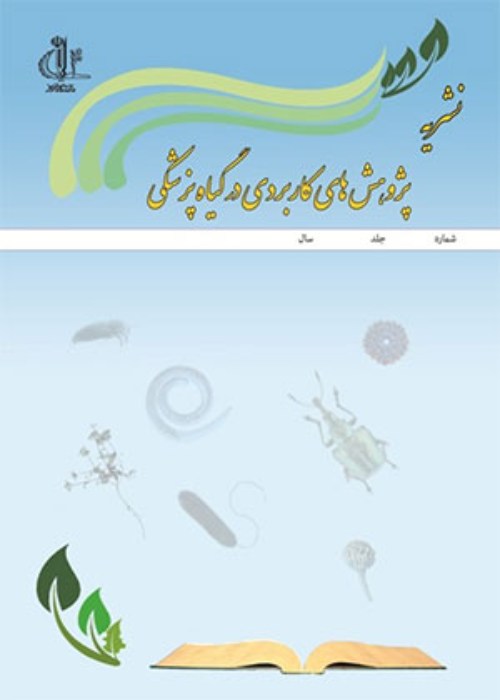Biological Control of Wheat Fusarium Head Blight Using Antagonistic Strains of Commercial and Local Trichoderma, Isolated from Wheat Plant Rhizosphere
Fusarium Head Blight (FHB) is one of the most important diseases of wheat causing considerable yield losse annually. Commonly management practices of the disease are not effective, so adopting new strategies to control are seriously needed. For this purpose, in the present study, efficiency of commercial and local Trichoderma strains was evaluated in the control of Fusarium Head Blight on wheat. For isolation of the pathogen and antagonists, samples were taken from infected wheat spicke and wheat rhizosphere, respectively. Identification of fungal isolates (Trichoderma and Fusarium isolates) was performed based on combination of morphological characteristics and molecular data. Accordingly, the identity of the 10 isolates of the pathogen and 13 isolates of the antagonists was determined as Fusarium graminearum and Trichoderma harzianum, respectively. In lab, after a preliminiary screening, a superior Trichoderma isolate from wheat rhizosphere (T. harzianum Tr5), one commercial product (T. harzianum T22) and T. longibrachiatum N(prepared from culture collection of Tabriz University,) were used to study their antagonistic activity against F. graminearum under laboratory and greenhouse conditions. Antagonistic strains were furhter assessed in the production of chitinase and protease enzymes. The results of laboratory tests showed that all fungal antagonist strains significantly inhibited the growth of the pathogen compared to control. In dual culture assay, the highest inhibitory percent was detected in the interaction of F. graminearum with T. harzianum Tr5and T. longibrachiatum N. Furthermore, only T. harzianum Tr5 was able to show mycoparasitism mechanism directly. The volatile compounds of the antagonist strains showed the lowest inhibitory against pathogen, without any significant difference between them. In non-volatile compounds assay, the highest inhibitory percentage was detected for T. longibrachiatum N and the lowest inhibitory percentage was detected for T. harzianum Tr5 and T. harzianum T22, respectively. All antagonists were able to produce chitinase and protease enzymes, with more capability for local isolates. Finally, the results of the greenhouse assay were positively in consistent with the laboratory tests. The results of greenhouse assay showed that the antagonist isolates significantly inhibited the adverse effects of the pathogen on weight loss of wheat grain.
- حق عضویت دریافتی صرف حمایت از نشریات عضو و نگهداری، تکمیل و توسعه مگیران میشود.
- پرداخت حق اشتراک و دانلود مقالات اجازه بازنشر آن در سایر رسانههای چاپی و دیجیتال را به کاربر نمیدهد.


